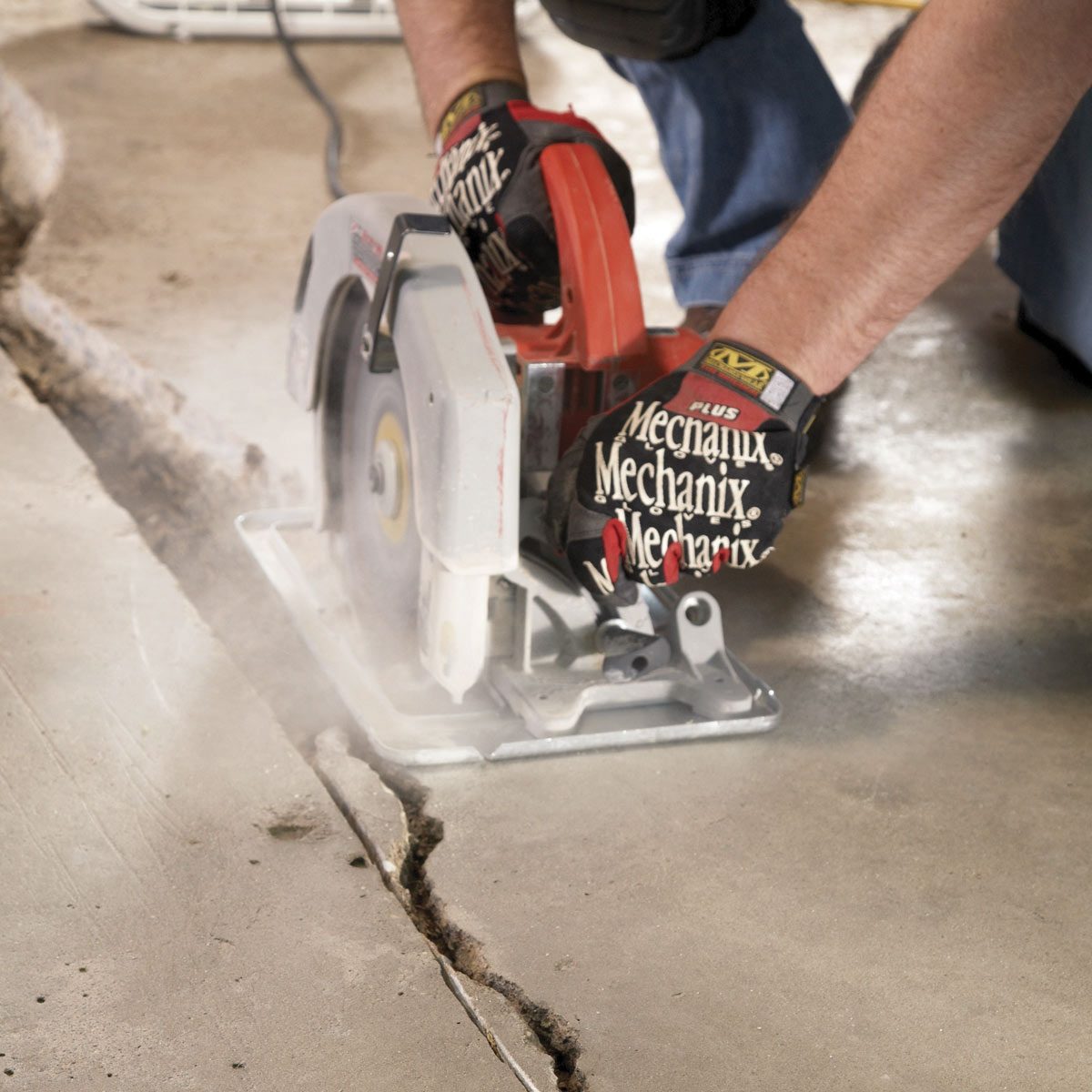- How To Fix Large Cracks In Concrete Garage Floor
- How To Fix Large Cracks In Concrete
- How To Fill Large Cracks In Concrete Flooring
Are you startled at the sight of cracks in your basement floor? You’re probably asking yourself “What do cracks in my basement wall mean?”
Option B: QUIKRETE Gray Concrete Crack Seal. Step 3b Pour the sealant from the bottle, overfilling the crack slightly to allow for settling and shrinkage. NOTE: for cracks deeper or wider than ¼ inch, Concrete Crack. Speaking of cracks, be sure to seal any large cracks with concrete filler and sealer. I neglected to fill this crack in the floor and literally poured 2.5 gallons of leveler into it before creating a little dam to stop all the leveler from pouring into the hole. If you're concrete floor has a hairline crack, you won't need the sand to repair this one. Just make two passes with the CrackWeld resin and that should be enough to fill and repair the crack. Use the putty knife to push any excess resin into the crack if you need to. After about 20 minutes, sand the excess resin off the floor. Fill the crack with urethane caulk, similar to what you would use for driveway caulk. It works perfectly as a concrete expansion joint sealant. Snip the opening of the tube at a 30-degree angle, making the opening the same size as your gap. Use a smooth, even motion, filling the crack flush with the surface, beveling it if it's against the house. To concrete cracks ⅛-inch wide or narrower, apply an epoxy or latex patching product (view example on Amazon), mixed according to the manufacturer’s specifications. The material goes on either with.
There are several reasons why your basement concrete slab will crack. Chances are the cracks are not an indication of a bigger problem as the basement floor does not hold the weight of the house, your foundation walls do all the heavy lifting. We will outline the different types of cracks below; ranging from cosmetic damage that you can repair yourself to the rare occasion where the damage is pointing to a much larger issue, where we suggest you seek professional basement waterproofing services. Let’s be clear no matter of the reason the crack appeared you should always seal the damaged area, even if it is just considered preventative maintenance.

The most common cracks found in your basement slab are the hairline cracks, the shape or pattern of the crack is irrelevant. A spider web crack versus a straight hairline crack makes it no more dangerous. These cracks generally occur due to surface shrinkage as the concrete dries. You will begin to notice hairline cracks within 12 months of the basement floor being poured. Many professionals advise that these types of hairline cracks are just superficial and do not require repairs as there is a slim chance of them expanding further or for moisture to seep through. However, sealing these cracks even further reduces the risk of moisture seeping in. You can seal these cracks yourself by using an elastomeric caulking sealant made for use on interior concrete surfaces (available at your local home improvement store).
How To Fix Large Cracks In Concrete Garage Floor
The shrinking concrete can lead to cracks ranging in 1/8” wide or bigger. Just like the hairline crack these do not represent any structural issues to your house. These cracks should be sealed using the same method as the hairline cracks to ensure moisture does not seep through in the future.
If the contractor didn’t sufficiently compact the ground below your basement floor you may experience patches of sunken concrete. Settling of the soil beneath the house causes the concrete to fall under the pressure of its own weight. Even though sunken concrete is more severe than the cracks notedabove, it is still not a cause for alarm. Repairing sunken sections of concrete in your basement is a fairly easy process, as all you need to do is pour self-leveling cement (available at most home repair centers) over the lowered section. If you can hold off on the repair, we suggest you do. A new house will normally finish settling within 24 months and if you fill the sunken concrete prior to the house finishing you may find yourself repeating the process as the filled section begins to sink as well.
How To Fix Large Cracks In Concrete

If you find sections of concrete pushed upwards, this is when you have a major issue. Soil that is rich with clay will expand as it absorbs water. Your concrete basement floor eventually cracks and lifts due to the pressure of the expanding soil underneath. Action should be taken immediately if you notice concrete in your basement lifting. This scenario calls for you to look for professional basement waterproofing services, as you will need to not only fix the current issue but take measures to ensure this doesn’t occur again.
No matter the type of crack on your basement floor you should always take measures to seal the damaged area before it potentially becomes a larger issue. The cost to repair these damages ranges from a couple dozen to tens of thousands of dollars. If you do not feel comfortable diagnosing or repairing your cracked basement slab, reach out to a professional for their advice. Looking after these cracks today, can prevent a larger headache and costs in the future.
Related Article: How to Prevent Basement Leaks
About Draintony
How To Fill Large Cracks In Concrete Flooring
We are a locally owned and operated plumbing company, providing residential and commercial owner plumbing services. We specialize in Drain Repair, Drain Cleaning,Basement Waterproofing, Sump Pump Installation, Clogged Toilets and more. Our team at Draintony is dedicated to providing you premier plumbing quality and premier plumbing services.




